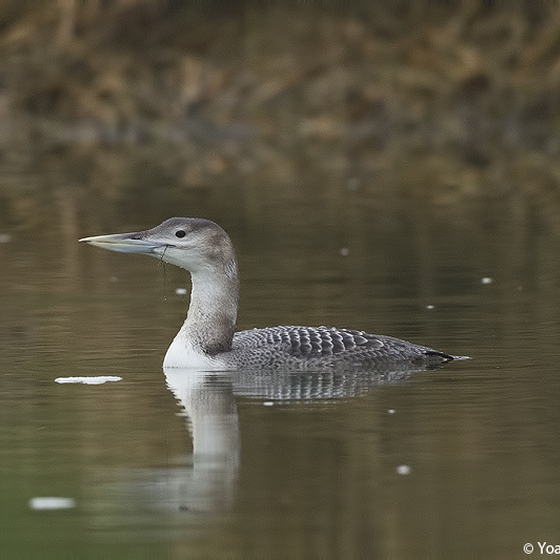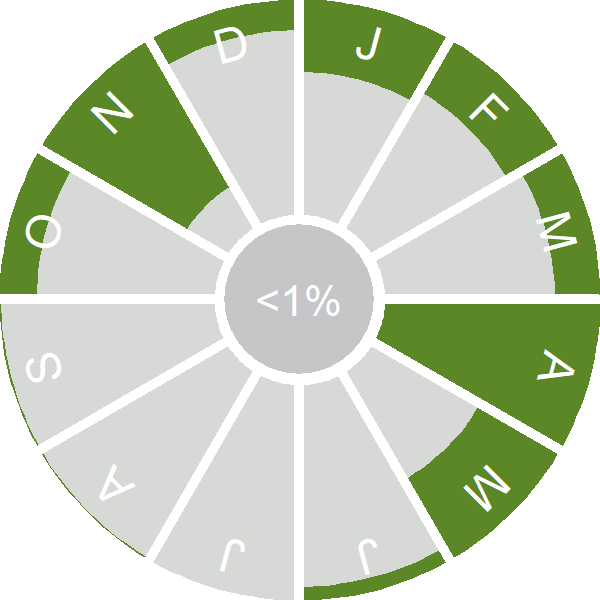White-billed Diver

Introduction
An Arctic species, this is a scarce visitor to Britain & Ireland and possibly a regular migrant past the northern and western isles of Scotland; there are records in all months of the year (but fewer in summer).

Key Stats
Status and Trends
Conservation Status
Population Change
Population trends of this scarce species are not routinely monitored.
Distribution
This species is a rare vagrant and was recorded during Bird Atlas 2007–11 as shown on the map.
Occupied 10-km squares in UK
2007/08–10/11
or view it on Bird Atlas Mapstore.
2008–11
or view it on Bird Atlas Mapstore.
European Distribution Map
Distribution Change
This vagrant is too rarely reported to map distribution change.
Change in occupied 10-km squares in the UK
Seasonality
White-billed Diver is a rare visitor in winter and autumn, though with an increasingly regular pulse of records in spring in northern Scotland.
Weekly pattern of occurrence
The graph shows when the species is present in the UK, with taller bars indicating a higher likelihood of encountering the species in appropriate regions and habitats.

Movement
Britain & Ireland movement
Biology
Survival and Longevity
Survival is shown as the proportion of birds surviving from one year to the next and is derived from bird ringing data. It can also be used to estimate how long birds typically live.
Classification, names and codes
Classification and Codes
- Order: Gaviiformes
- Family: Gaviidae
- Scientific name: Gavia adamsii
- Authority: GR Gray, 1859
- BTO 2-letter code: WV
- BTO 5-letter code: WHBDI
- Euring code number: 50
Alternate species names
- Catalan: calàbria de bec pàl·lid
- Czech: potáplice žlutozobá
- Danish: Hvidnæbbet Lom
- Dutch: Geelsnavelduiker
- Estonian: tundrakaur
- Finnish: jääkuikka
- French: Plongeon à bec blanc
- Gaelic: Learga-bhlàr
- German: Gelbschnabeltaucher
- Hungarian: fehércsoru búvár
- Icelandic: Svalbrúsi
- Irish: Lóma Gobgheal
- Italian: Strolaga beccogiallo
- Latvian: dzeltenknabja gargale
- Lithuanian: baltasnapis naras
- Norwegian: Gulnebblom
- Polish: nur bialodzioby
- Portuguese: mobelha-de-bico-amarelo
- Slovak: potáplica bielozobá
- Slovenian: rumenokljuni slapnik
- Spanish: Colimbo de Adams
- Swedish: vitnäbbad islom
- Welsh: Trochydd Pigwyn
More Evidence
More evidence from Conservation Evidence.com
Partners
Citing BirdFacts
If you wish to cite particular content in this page (e.g. a specific value) it is best to use the original sources as linked in the page. For a more general citation of the whole page please use: BTO (20XX) BirdFacts Species: profiles of birds occurring in the United Kingdom. BTO, Thetford (www.bto.org/birdfacts, accessed on xx/xx/xxxx).

